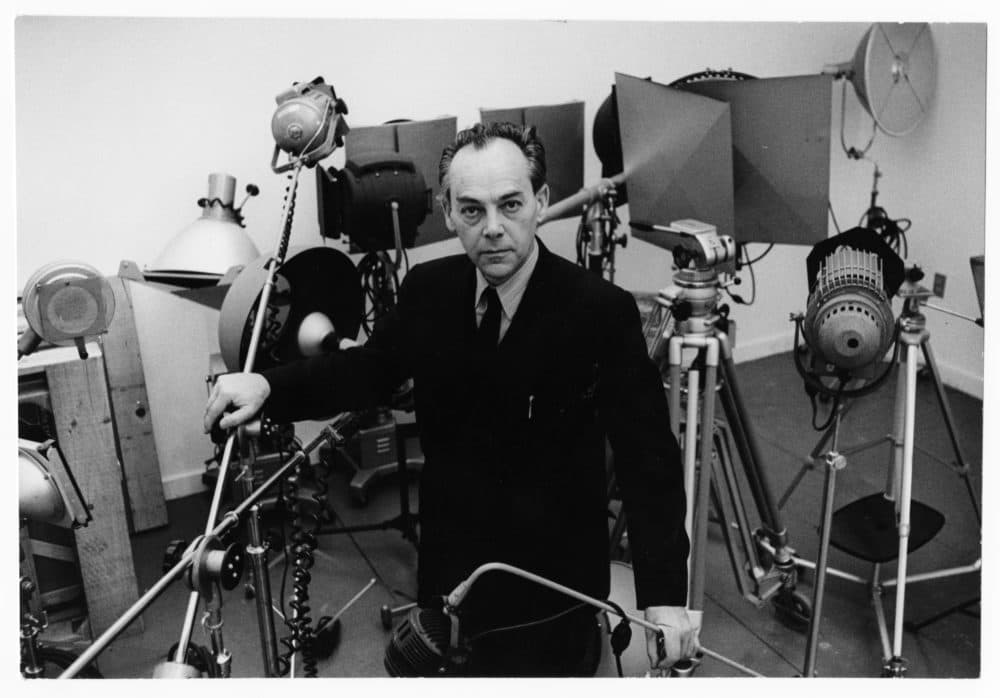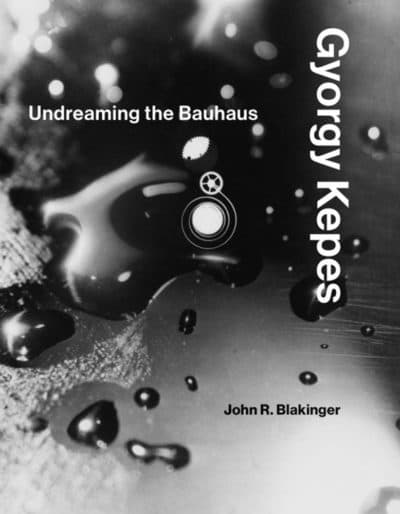Advertisement
Review
'Undreaming The Bauhaus' Explores György Kepes' Career In Context Of Our Modern Artwashing Woes

Does any other word better capture the current art-world zeitgeist than “artwashing”? The term, which was first used in reference to artists-as-gentrifiers, has expanded to include donations to cultural institutions from funders whose wealth derives from manufacturing weapons or opioids.
When it was recently revealed that the tear-gas canisters used against asylum seekers at the U.S.-Mexico border were manufactured by a company owned by Warren B. Kanders, vice chair of the board at the Whitney Museum of American Art, there were immediate calls for him to step down. Meanwhile, photographer Nan Goldin has staged effective protests against the Metropolitan Museum, the Harvard Art Museums, and the Tate, among other places, for accepting funding from the Sackler family, who own Purdue Pharma, purveyor of OxyContin.

Amid these clashes between art-world denizens and technocrats comes a cautionary tale featuring one who was accused of artwashing years ago, the mid-20th-century Bauhausian disciple György Kepes. Though timed to coincide with the centennial of the Bauhaus, "György Kepes: Undreaming the Bauhaus," John R. Blakinger’s comprehensive and lushly illustrated analysis of Kepes’ years at MIT, resonates with current debates about corporate entities funneling money into art as a distraction from products of dubious benefit to humanity.
The title of the book borrows Kepes’ own phrase, describing his hope to make the ideals of the Bauhaus practical. The Bauhaus, which was founded in 1919 in Dessau, Germany, has had an outsized influence on architecture and design; practitioners at the school pioneered a “neutral” palette and clean lines now associated with modernism. The Bauhaus has been no less influential academically, particularly in the United States. When the Nazis dismantled the school in 1933 for its “degeneracy,” many of its professors and acolytes fled to Harvard, MIT, and other American universities that welcomed the refugees to their faculties. “Hitler is my best friend,” Walter Cook, founding director of the Institute of Fine Arts at New York University, purportedly quipped. “He shakes the tree and I collect the apples.” In exchange, the refugees offered a pedagogical model based on interdisciplinarity that would change and shape the curricula of American institutions for years to come.
One of these refugee prophets was Kepes, who landed at MIT in 1946, and founded the school’s Center for Advanced Visual Studies in 1967. Since his death in 2001 Kepes has been a cult hero to artists, graphic designers, and scholars. The many books he designed and edited have been quietly influential for years. Curator Hans Ulrich Obrist cites Kepes as a crucial precedent for his own wide-ranging curiosity. Yet in contrast to other Bauhaus figures, such as founder Walter Gropius, who remodeled the Harvard Graduate School of Design in its image, and László Moholy-Nagy, who founded the New Bauhaus in Chicago (now the IIT Institute of Design), the Hungarian-born designer remains relatively obscure. Blakinger convincingly posits that Kepes, who was among the youngest of the Bauhausian emigres, was always one or two beats behind other artists. “He was an avant-garde artist who came of age after the avant-garde had disbanded; he was the last of the Bauhaus modernists, resigned to proselytizing the Bauhaus idea after the Bauhaus was no more,” Blakinger writes. “He was out of art-historical time, strangely belated.”
In a few introductory paragraphs, Blakinger efficiently summarizes the horrors that shaped Kepes’ early years, driving him first from Hungary (where he was born in 1906) to Germany, then London, and finally to the U.S., and surely haunting him for the rest of his days: His sister was murdered at Auschwitz, and war tore his family apart. Kepes defined himself based on his refugee status: “I am vagabond,” he wrote on a page of his lecture notes. He finally found a home in Cambridge, Massachusetts, after accepting an invitation to teach at MIT, which hoped to capitalize on Kepes’ Bauhaus credentials to modernize its architecture school.
At first MIT terrified Kepes. “If you have ever been to MIT, there’s this terrific long corridor and each time you look into any kind of open window you just see all these kinds of fear instruments,” he recalled in a lecture at Yale in the 1960s. On the other hand, the laboratories along the famous Infinite Corridor revealed unexpected treasures, which Kepes used to create his books about visual learning, eventually leading to the six "Vision + Value" books, which were published in 1965-66 and 1972.
Blakinger’s strongest writing is on Kepes’ books — the works that solidified his legacy. He captures the pleasure of losing oneself in the subtle poetry of Kepes’ visual essays. In "The New Landscape in Art and Science," for example, a spread including explosive patterns of detonations and electric sparks is followed by a delicate X-Ray of a rose. Yet there was a dark side to the books: Blakinger points out that “many of the contributors to Kepes’ volumes were entangled with military power.” Kepes was notably criticized by Moholy-Nagy’s widow, Sibyl Moholy-Nagy, who became a formidable architecture critic after her husband’s death. After Kepes sent her complimentary copies of the first three volumes in the "Vision + Value" series, Moholy-Nagy lashed out at him in a letter: “But even if it made sense to worship MIT while denouncing what its graduates have done to society, isn’t the whole premise of your books completely obsolete? ... Does it not occur to you that the computer boys of MIT are playing a game of words and figures that could kill every last instinct for sense values if it were to conquer the territories it so naively invades now?”
The notion of Kepes as providing cover, or distraction, for the military-industrial complex is exactly what Blakinger hopes to contest. MIT students were awakening to the school’s engagement in military issues and began to call for a “research stoppage.” As a petition made the rounds at MIT introducing the idea of a “total conversion” of the laboratories from “wasteful to socially useful production,” Kepes asked his colleagues for project ideas that would benefit society. In the end, it seemed that even this noble view was corruptible: The sciences would not become more humane by virtue of proximity to or intervention by the arts, Blakinger writes, “but instead make the arts more inhumane by relating them to the sciences.”
Yet Blakinger wants to persuade us that Kepes was committed to MIT not merely because it provided him with a highly driven, intellectual community (not to mention an income), but because he believed art had the power to redeem, even to transform. “I want to believe in the utopianism,” he writes in the book’s conclusion. “I want to believe in the romantic gesture, even while recognizing its limitations.” Blakinger wrote his dissertation, the basis for this book, while at Stanford, where, he notes, money flows in from Silicon Valley. He also points out that arts and humanities degrees are in steep decline. Yet recent events suggest that art does have some power to curb corporate greed and challenge the impulses that drive institutional growth. After all, the Sacklers are now being brought to account by New York’s Supreme Court, and the controversy at the Whitney has yet to be resolved. Maybe the “undream” is still alive, after all.